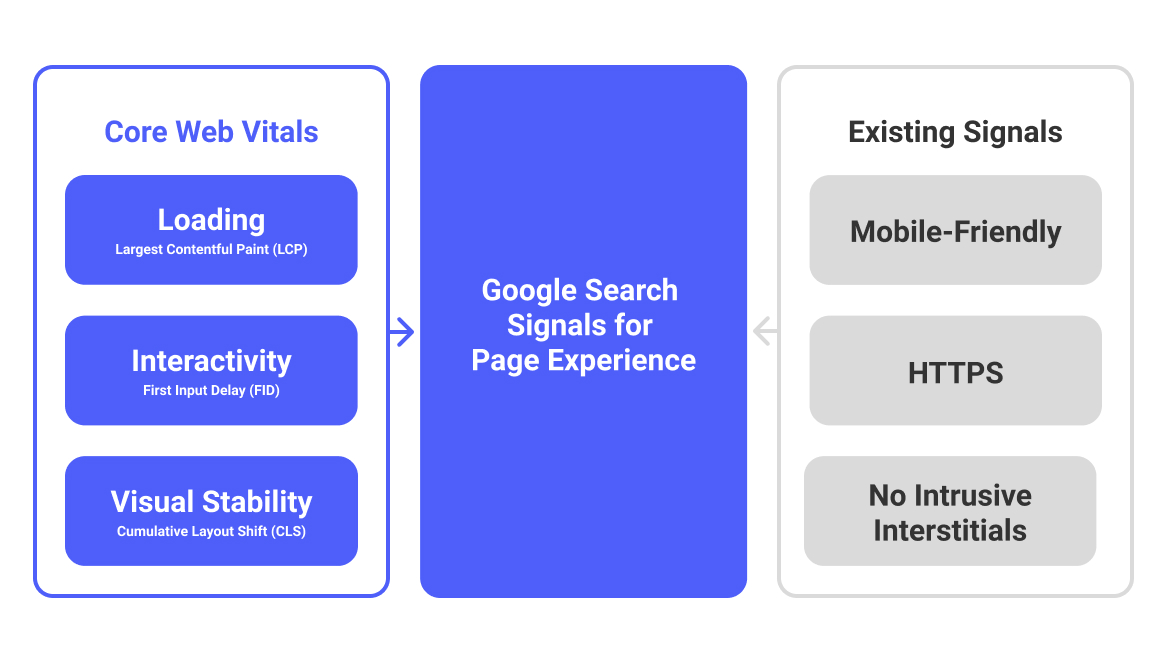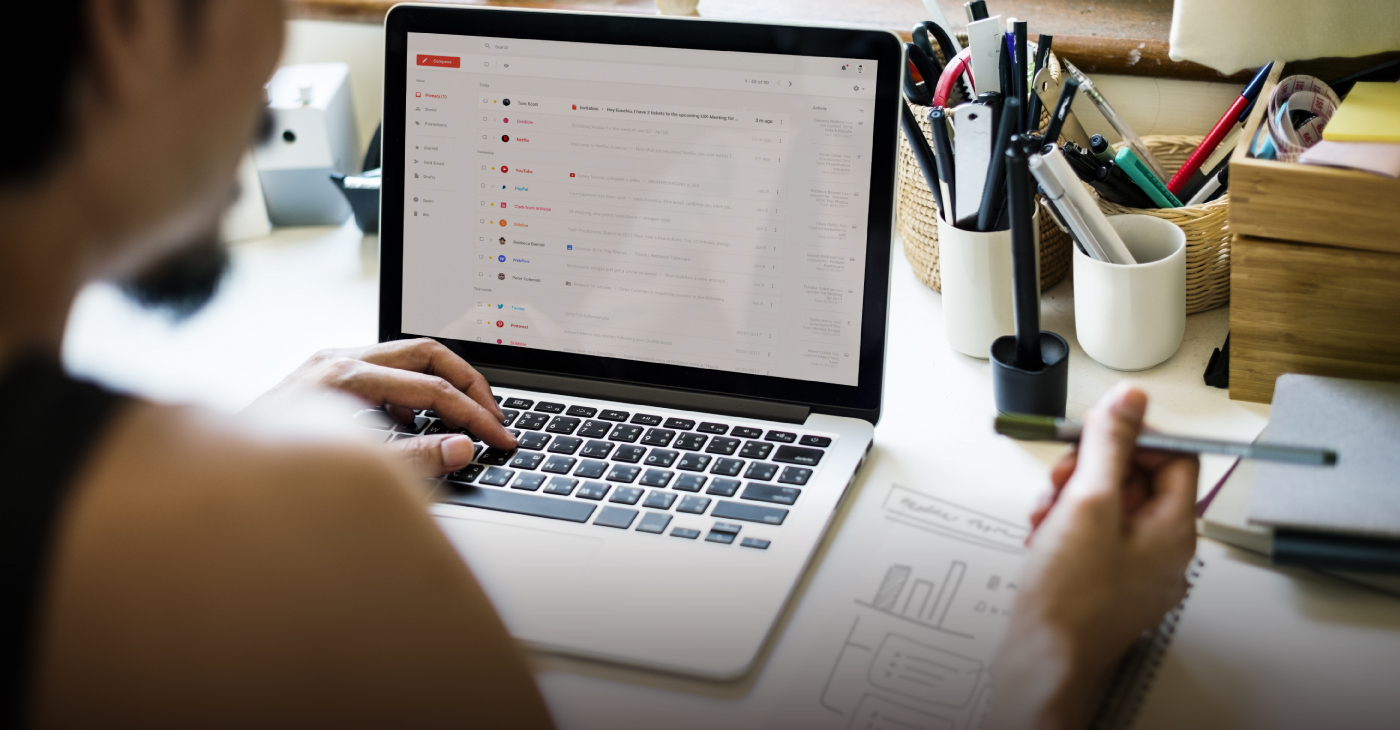SEARCHENGINES
What are Core Web Vitals and Why You Should Care?

When it comes to optimizing your website, you do so for various reasons. It’s important that your site is set up to generate leads, optimized for SEO, encourages more email subscribers so you can grow your email list, and that it provides an optimal user experience.
You may not have heard of it before, but Core Web Vitals are especially important for increasing the experience of your users. Let’s dive into what Core Web Vitals are and what you can do to make sure your website has good Core Web Vitals.
What are Core Web Vitals
Web Vitals is an initiative by Google on how to provide a great user experience (UX) for the web. Core Web Vitals, a subset of Web Vitals, helps you to judge your website’s UX against a distinct set of UX metrics.
Google intends to evolve Core Web Vitals over time. However, as of 2021, the current set of Core Web Vitals focuses on the following three areas of UX: loading, interactivity, and visual stability.
These three areas are measured as Largest Contentful Paint (LCP), First Input Delay (FID), and Cumulative Layout Shift (CLS).

Why Core Web Vitals Are Important
In May 2020, Google announced that Core Web Vitals would be incorporated into Google’s Search Ranking Signals. What that means is your website’s Core Web Vitals will influence how well your website ranks in Google Search, along with many other ranking factors.
Google began introducing Core Web Vitals to Google Search in June 2021 and is scheduled to be completed by the end of August 2021.
Since 2015, Google has been increasing the importance of good website UX as a Search Ranking Signal. This puts more emphasis on website owners to ensure their website UX is excellent if they want to be rewarded with good Google search rankings.
How Can I Tell if My Website Has Good Web Vitals
Unlike most of the other Search Ranking Signals, Google has made it easy to know if your website has good or bad Core Web Vitals.
To get a quick overview of your website’s Core Web Vitals, you can use either Google PageSpeed or Google Lighthouse.
For a fast and simplified overview of your website’s Core Web Vitals, enter your website URL into Google PageSpeed and hit the Analyze button.

To check your website’s Core Web Vitals as well as other user-experience metrics, you can run a Google Lighthouse audit from within Chrome DevTools.
Although there are other ways to check your website’s Core Web Vitals, these two tools use field data wherever possible as opposed to lab data. Field data means data collected from real-life users that have visited your website in the past. Lab data means simulated data based on averages collected from other websites.
Google recommends using field data over lab data when testing a live website’s vitals as field data is more closer to what an actual website user would experience in the real world.
What Can I Do to Make Sure my Website has Good Web Vitals?
Ensuring your website is golden when it comes to Good Web Vitals isn’t necessarily a quick SEO tactic you can implement in just 15 minutes. However, that doesn’t mean it isn’t worth doing.
Fortunately, Google has outlined what metrics you should aim for if you want to have good Core Web Vitals. They are as follows:
- Largest Contentful Paint: within 2.5 seconds of when the page first starts loading.
- First Input Delay: 100 milliseconds or less.
- Cumulative Layout Shift: 0.1. or less.
If your website’s Core Web Vitals are not within the thresholds outlined above, the next section will tell you how you can improve them.

Improving Largest Contentful Paint (LCP)
The time it takes for a browser to receive content from your server can have an adverse effect on how quickly your website appears on the screen. A faster server response time improves page-load metrics, including LCP and time to first byte (TTFB). You can improve your TTFB by:
- Cleaning up your server and ensuring it has enough resources
- Implementing a content delivery network (CDN)
- Ensuring all static website files such as CSS and JavaScript are cached
- Making sure HTML pages are served cache-first
- Establishing third-party connections early
- Using signed exchanges (SXGs) wherever possible
Unoptimized WordPress websites are notorious for having poor LCP/TTFB metrics. That’s why investing in a high-performance WordPress hosting server is important if you want to achieve the best Core Web Vitals scores.
Another area that can drastically improve your LCP is optimizing the way your website loads static JavaScript and CSS files. Here are a few ways you can optimize your website CSS and JS file handling:
- Reduce/remove render-blocking JS and CSS
- Compress and minify JS and CSS
- Defer non-critical JS and CSS while making critical JS and CSS inline
Aside from CSS and JavaScript, your website assets (images, videos, and fonts, etc.) could be hurting your LCP. Here are a few ways to minimize the impact your website assets has on your LCP:
- Remove unnecessary images
- Optimize and compress all images
- Use modern image formats such as JPEG 2000, JPEG XR, or WebP
- Lazy-load website assets and consider using an image CDN
- Preload any custom web fonts and use the WOFF2 format
- Ensure GZIP is enabled on your web server or CDN

Improving First Input Delay (FID)
FID measures the time from when a user first interacts with your web page to the point where they can actually respond. A real-life human interaction would be necessary in order to measure this response delay. That means lab tests will not work to simulate FID. If you are unable to test your website with field data, total blocking time (TFT) can be used as a fallback metric. Here are a few ways to improve your website FID and TFT metrics:
- Remove or reduce unnecessary JavaScript
- Break up long tasks into smaller asynchronous tasks
- Optimize your web page for interaction readiness
- Reduce reliance on cascading fetches and third-party JavaScripts
- Consider on-demand loading for critical third-party JavaScript
- Use a web worker for non-UI operations
- Reduce JavaScript execution time by deferring unused JS
- Minimize unused polyfills

Improving Cumulative Layout Shift (CLS)
Have you ever gone to click a website button only for it to shift its position when the page finally loads? That’s an example of a website with poor CLS. The CLS metric measures how unstable your website layout is by summing up layout shifts that happen without user input. It also looks at how much visible content has shifted in view as well as the distance it shifted by. If your website has poor CLS, here are a few ways to improve it:
- Always include width and height size attributes on your website images and videos
- If your website has banner ads, statically reserve a space for the ad slots
- Avoid placing non-sticky ads at the top of the viewport
- Use a placeholder or fallback to reserve the space for iframes and embeds
- Avoid pop-ups that shift the layout of your web pages when they are still loading
- Avoid using animations that shift your website layout
- Use the CSS transform attribute over attributes that can cause layout shifts such as box-shadow and box-sizing
Wrapping Up
Website optimization is crucial for success. Your site plays a key role in growing your email list and getting you new leads to engage with. It needs to be built successfully so it leaves an impression and delights your users.
Improving your Core Web Vitals will not only help improve your user experience but also your website’s ability to rank well in Google search.
Author:
James, Founder of jamesbanks.co, teaches entrepreneurs how to start and scale online businesses with search engine marketing. His content stems from growing over a thousand businesses over the last decade as a digital marketing consultant and agency co-owner.
SEARCHENGINES
Google Won’t Change The 301 Signals For Ranking & SEO

Gary Illyes from Google said on stage at the SERP conference last week that there is no way that Google would change how the 301 redirect signal works for SEO or search rankings. Gary added that it’s a very reliable signal.
Nikola Minkov quoted Gary Illyes as saying, “It is a very reliable signal, and there is no way we could change that signal,” when asked if a 301 redirect not working is a myth. Honestly, I am not sure the context of this question, as it is not clear from the post on X, but here it is:
More from @methode:
– 301 redirect not working is a myth. “It is a very reliable signal, and there is no way we could change that signal”.#SERPConf2024#SERPConf2024International— Nikola Minkov (@n_minkov) April 19, 2024
We’ve covered 301 redirects here countless times – but I never saw a myth that Google does not use 301 redirects as a signal for canonicalization or for passing signals from an old URL to the redirected URL.
Forum discussion at X.
Note: This was pre-written and scheduled to be posted today, I am currently offline for Passover.
SEARCHENGINES
Google Again Says Ignore Link Spam Especially To 404 Pages

I am not sure how many times Google has said that you do not need to disavow spammy links, that you can ignore link spam attacks and that links pointing to pages that 404/410 are links that do not count – but John Mueller from Google said it again.
In a thread on X, John Mueller from Google wrote, “if the links are going to URLs that 404 on your site, they’re already dropped.” “They do nothing,” he added, “If there’s no indexable destination URL, there’s no link.”
John then added, “I’d generally ignore link-spam, and definitely ignore link-spam to 404s.”
Asking if it would hurt to disavow, after responding with the messages above, John wrote:
It will do absolutely nothing. I would take the time to rework a holistic & forward-looking strategy for the site overall instead of working on incremental tweaks (other tweaks might do something, but you probably need real change, not tweaks).
Earlier this year we had tons of SEOs notice spammy links to 404 error pages, John said ignore them. In 2021, Google said links to 404 pages do not count, Google also said that in 2012 and many other times.
Plus, outside of links to 404 pages, Google has said to ignore spammy links, time and time again – even the toxic links – ignore them. The messaging around this changed in 2016 when Penguin 4.0 was released and Google began devaluing links over demoting them.
Here are those new posts in context:
I’d say add both. Lol
— Jeremy Rivera (@JeremyRiveraSEO) April 11, 2024
Sure. But also, save yourself the work completely :-).
— John 🧀 … 🧀 (@JohnMu) April 11, 2024
Re-reading your initial post – if the links are going to URLs that 404 on your site, they’re already dropped. They do nothing. If there’s no indexable destination URL, there’s no link. I’d generally ignore link-spam, and definitely ignore link-spam to 404s.
— John 🧀 … 🧀 (@JohnMu) April 11, 2024
… but still… is this a dumb idea?
— Rebekah Edwards (@rebekah_creates) April 11, 2024
It will do absolutely nothing. I would take the time to rework a holistic & forward-looking strategy for the site overall instead of working on incremental tweaks (other tweaks might do something, but you probably need real change, not tweaks).
— John 🧀 … 🧀 (@JohnMu) April 11, 2024
And in general, Google says it ignores spammy links, so you should too (not new) but this post from John Mueller is:
I would just ignore them, Google ignores them too. Sometimes they’re just more visible in tools, but that doesn’t mean they’re a problem.
— John 🧀 … 🧀 (@JohnMu) April 18, 2024
And then also on Mastodon wrote about a similar situation, “Google has 2 decades of practice of ignoring spammy links. There’s no need to do anything for those links.”
Forum discussion at X.
Note: This was pre-written and scheduled to be posted today, I am currently offline for Passover.
SEARCHENGINES
Google Needs Very Few Links To Rank Pages; Links Are Less Important

Gary Illyes from Google spoke at the SERP Conf on Friday and he said what he said numerous times before, that Google values links a lot less today than it did in the past. He added that Google Search “needs very few links to rank pages.”
Gary reportedly said, “We need very few links to rank pages… Over the years we’ve made links less important.”
I am quoting Patrick Stox who is quoting what he heard Gary say on stage at the event. Here is Patrick’s post where Gary did a rare reply:
I shouldn’t have said that… I definitely shouldn’t have said that
— Gary 鯨理/경리 Illyes (so official, trust me) (@methode) April 19, 2024
Gary said this a year ago, also in 2022 and other times as well. We previously covered that Google said links would likely become even less important in the future. And even Matt Cutts, the former Googler, said something similar about eight years ago and the truth is, links are weighted a lot less than it was eight years ago and that trend continues. A couple of years ago, Google said links are not the most important Google search ranking factor.
Of course, many SEOs think Google lies about this.
Judith Lewis interviewed Gary Illyes at the SERP Conf this past Friday.
-

 PPC5 days ago
PPC5 days ago19 Best SEO Tools in 2024 (For Every Use Case)
-
SEARCHENGINES7 days ago
Daily Search Forum Recap: April 17, 2024
-
SEARCHENGINES6 days ago
Daily Search Forum Recap: April 18, 2024
-
SEARCHENGINES5 days ago
Daily Search Forum Recap: April 19, 2024
-

 MARKETING6 days ago
MARKETING6 days agoEcommerce evolution: Blurring the lines between B2B and B2C
-

 SEO6 days ago
SEO6 days ago2024 WordPress Vulnerability Report Shows Errors Sites Keep Making
-

 WORDPRESS5 days ago
WORDPRESS5 days agoHow to Make $5000 of Passive Income Every Month in WordPress
-

 WORDPRESS6 days ago
WORDPRESS6 days ago10 Amazing WordPress Design Resouces – WordPress.com News






You must be logged in to post a comment Login